Women in science study earth and sky
Meet our geologists, paleontologists and more
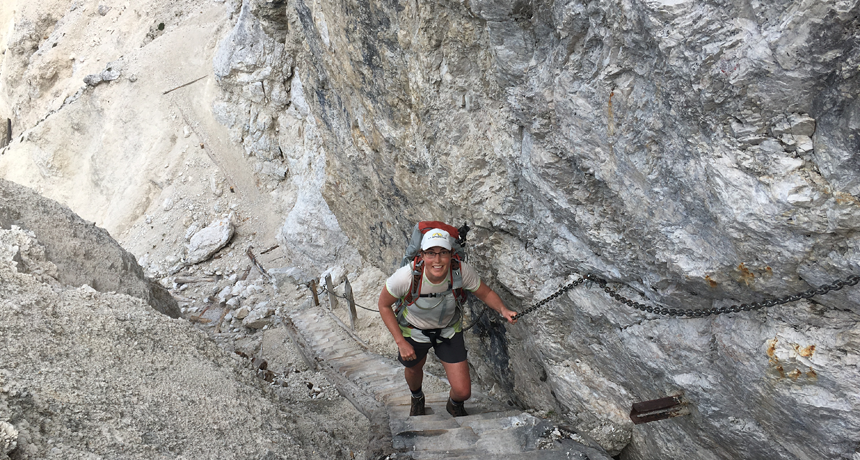
Twila Moon rocks out on a recent hiking trip in the Dolomites in Italy.
Chris Moon
Many kids go through a “dinosaur phase.” They read books on dinosaurs and dig up their yards hunting for these ancient giants. Most of us grow out of it. But some people keep their love for fossils as they grow up. And if they do, they might become scientists.
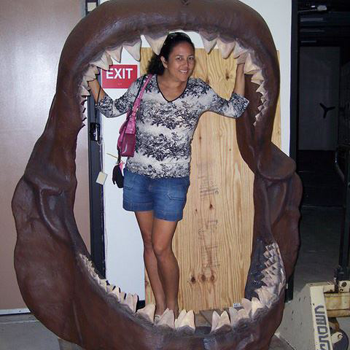
Science News for Students put a call out asking for women in science, technology, engineering and math (or STEM) to send us their photos, videos and sound clips. We wanted to show our readers what scientists really looked like when we published a feature on women in STEM. The response blew us away. We had more than 150 submissions from all different fields of STEM and from all over the world!
Today, we celebrate women in STEM who never lost their love for fossils. We also highlight women who study the ground beneath our feet and the skies above our heads.
Lisa Babilonia
Like many kids, Babilonia became fascinated with dinosaurs at a young age. For her, it happened on a trip to the Natural History Museum of Los Angeles in California when she was just four. Since then, she says, “being a paleontologist is all I have ever wanted to do.” Now she is a paleontologist — someone who studies the remains of ancient organisms. She runs an interpretive center filled with local fossils at Ralph B. Clark Regional Park in Buena Park, Calif.
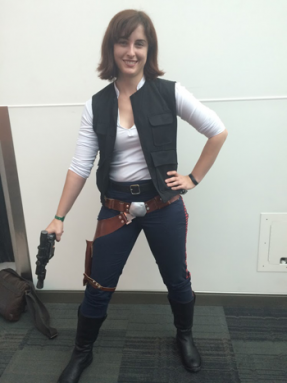
Babilonia believes in getting the most out of life. “I have a passion for art, music and movies,” she says. “I paint and draw and belly dance. I go to Burning Man [a yearly festival in the Nevada desert]… I love to cook. I play tennis and am a big sports fan.” The people around her are important, too. “My fiancé, family and friends are integral to my life.”
Jessica Ball
Volcanoes do more than ooze lava. They also can cause huge landslides and mudslides. Ball’s job is to figure out why. She’s a volcanologist — someone who studies volcanoes — at the U.S. Geological Survey in Menlo Park, Calif. “I use numerical models to figure out how water can make volcanoes unstable even if they’re not erupting,” she explains. She also works on figuring out where large volcanic landslides might occur.
In her off hours, Ball spends time communicating her science. She writes a science blog and even spent a year in Washington, D.C., promoting science to politicians.
Her job might be hot, but Ball’s hobbies are cool. Not only does she love Star Wars, she says, “I was in a rock band while I was in grad school — playing the violin!”
Wendy Bohon
Bohon uses science to shake things up. She’s a geologist at the Incorporated Research Institutions for Seismology in Washington, D.C. Today she studies earthquakes. But before she got into science, Bohon took to the stage, earning a degree in theatre.
(Post continues below video)
EarthScope
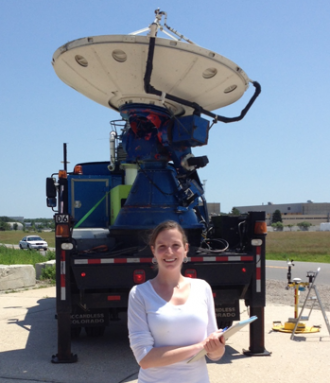
Sara Ganetis
“My research is literally cool because I study snowstorms,” says Ganetis. She’s a graduate student in atmospheric science at Stony Brook University in New York. She uses observations of snow, weather-modeling data and theory to better understand and predict the behavior of heavy bands of extreme snowfall within storms.
Ganetis also loves animals, particularly squirrels. She loves them so much she carries nuts with her to feed them. But this habit has backfired in the past. “While in college, I fed nuts to the squirrels outside of my dorm room window,” she says. “While away at class one afternoon, some squirrels broke in and stole all of my nuts!” Since then, she carries the nuts with her to foil squirrel burglars.
Lindsay Hunter
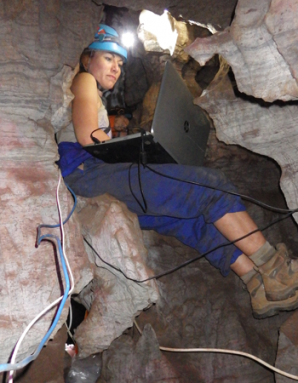
About a year ago, scientists revealed fossils from an underground cave in South Africa. The fossils might belong to a new human relative called Homo naledi. But when the scientists went to work in the cave, they found its entrance was too narrow for most adult men. They recruited female scientists to take over. One was Hunter. This paleoanthropologist works at the African Digital Education Trust in Westbury, South Africa. Along with five other women, she squeezed into the cave to help recover the precious fossils.
Now, she says, “I use my training to teach and inspire South Africans to explore their fossil heritage.”
Hunter has always enjoyed being active. “When I was in college, I used to compete in Olympic modern pentathlon and even completed the team’s Olympic Development Training Camp,” she says. “I was never very good (and never an Olympian), but I enjoyed the challenge of keeping on top of shooting, fencing, running, swimming and horseback jumping. I do my best thinking when I’m active!”
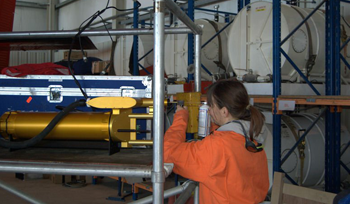
Amelie Kirchgaessner
Kirchgaessner sent us a photo from all the way down south — Antarctica! She’s a scientist who studies the atmosphere for the British Antarctic Survey. It’s headquartered in Cambridge, England.
“Flying with our research aircraft below, in and above clouds, my colleagues and I study the properties of clouds in polar regions, and the processes leading to their formation,” she says. “These clouds play an important role in the Earth’s climate system that isn’t fully understood yet.”
Not all of her interests are science related. Kirchgaessner says if she hadn’t become a scientist, “my alternative dream job would be as a translator for the United Nations.”
Twila Moon
You may have heard in the news that glaciers are melting. But how do we know? Because of scientists like Moon. At the University of Bristol in England, she focuses on glaciers. “The Greenland ice sheet is one of my favorite places to study,” she says. “I use a lot of data from satellites, but also sometimes I get to go do work directly on the ice sheet.”
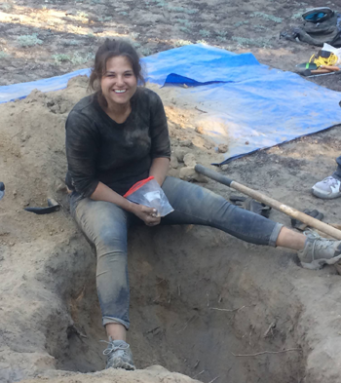
Kimber Moreland
Moreland digs dirt. And that makes sense. She’s a soil scientist at the University of California, Merced, with training in the fields of biology, ecology and evolution.
Her work involves studying how climate and the area where a patch of dirt is located affect the soil’s properties.
“One interesting fact about myself,” she says, “is that I have two learning disabilities that I have had to navigate through to be successful in this field.”
Daniela Reis
Reis is off to an exciting start in science. She’s majoring in geology at the University of Coimbra in Portugal. “I am currently involved in a research project focusing on the mineralogy of kimberlites — igneous rocks that often bear diamonds,” she says.
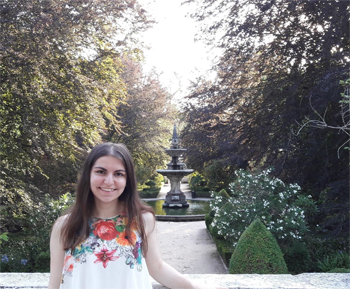
At first, Reis thought she might study genetics. “I was born with blue eyes and they suddenly changed to brown,” she notes. But rocks ultimately won her over.
“I aspire to become a geoscientist in the hope of contributing to increase the knowledge of the geologic processes and structures that mold the Earth over time and — most of all — because I like to study the fascinating and ever-evolving field of geology!”
Anna Scott
Summer is hot, but in cities it’s often hotter. This is called the urban heat island effect. Scott wants to figure out how and why cities are hotter than the area around them. She’s a graduate student at Johns Hopkins University in Baltimore, Md.
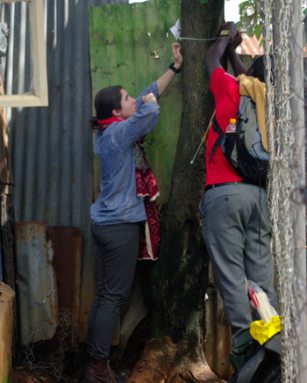
In her free time, Scott likes to get cheesy. Her hobby is making cheese!
Darcy Shapiro and Kelsey Pugh
Science is better when you do it together. Shapiro and Pugh are both graduate students. Shapiro is at Rutgers University in New Brunswick, N.J., and Pugh is at the Graduate Center of the City University of New York in New York City. Both are paleoanthropologists, scientists that study the origins of humans.
Focusing on fossils, Shapiro and Pugh study the evolution of apes, ape locomotion and human bipedalism (walking on two legs). “The photo,” Shapiro notes, “was taken at a Miocene-aged site in Hungary where we were doing fieldwork in the summer of 2015.” (The Miocene is an epoch of time between 5.3 million and 23 million years ago.)
When they aren’t doing science, Shapiro likes indoor rock climbing, and Pugh is into knitting.
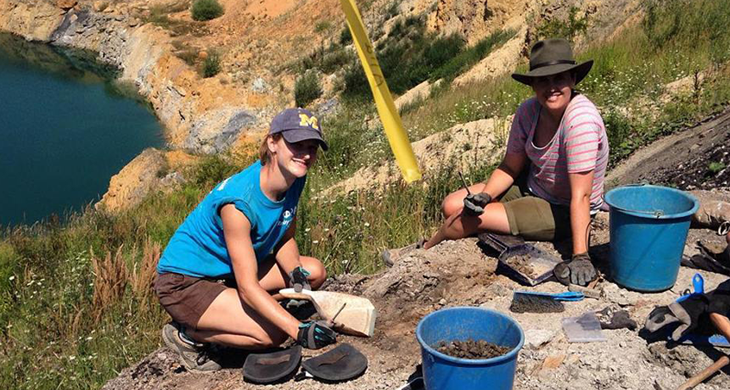
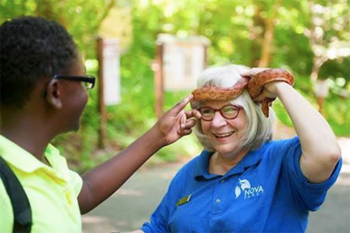
Leanne Wiberg
Wiberg uses her science skills as an educator at Potomac Overlook Regional Park in Arlington, Va. “I’m a writer and educator who enjoys putting science into plain English,” she says. As a naturalist at the park, “I lead hikes and help kids and adults understand exactly why our local rocks, plants and animals are so unique,” she says. “Lately, I’ve been studying Virginia’s state rock, which is called nelsonite.”
Laura Wilson
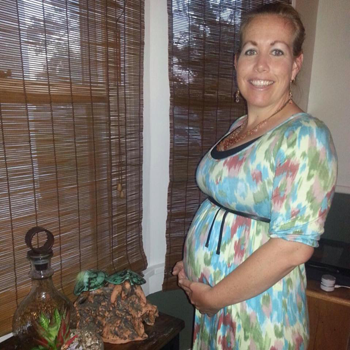
Wilson is a paleontologist at Fort Hays State University in Hays, Kansas. She’s also the curator of paleontology at the Sternberg Museum of Natural History there. “I have spent most of the last 10 years studying the animals and ecosystems of the Western Interior Seaway,” she observes. That’s the ocean that stretched across central North America from the Gulf of Mexico to the Arctic Ocean between 100 million and 66 million years ago.
“I am particularly interested in the birds that lived in these ecosystems.” Those birds may be long gone, but they left behind fossils for Wilson and others to study.
When she’s not doing science, Wilson loves sports. “I played lacrosse in college and will watch or play just about any sport,” she says.
If you enjoyed this post, make sure to check out the others in our series on women in STEM. We’ve got women in astronomy, biology, chemistry, medicine and ecology. And keep an eye out for new additions as we cover math, neuroscience and more.
Follow Eureka! Lab on Twitter







